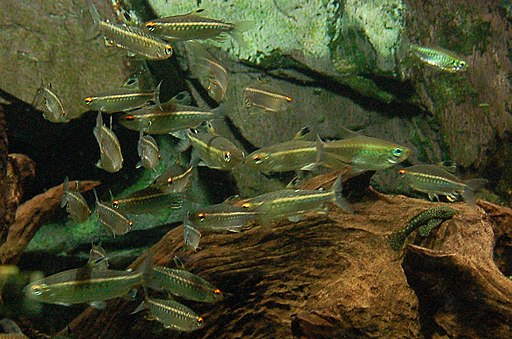The Multicolor Angelfish (Centropyge Multicolor) is a deepwater species that is sold from time to time in the marine aquarium hobby. Usually, the fact that it hails from deeper waters would mean it is a harder than normal dwarf angelfish to rear in captivity. This is untrue as far as the Multicolor angelfish is concerned.
The multicolor angel is an especially hardy member of the genus centropyge once it has been acclimated and adjusted to its new living quarters. Upon purchasing a specimen, they may be shy initially as they are used to waters without too much light. Multicolor angels are considered an aggressive species that will usually dominate smaller aquariums.
Their main body is mostly white with shades of orange, yellow and brown on its lower half. It also has a distinctive electric blue crown on its head. Its anal and dorsal fins are blue to black while its face and caudal fin are all yellow.
They do not tolerate other dwarf angels and will usually harass them to no end. Larger aquariums above 150 gallons are needed to keep another centropyge with the multicolor angelfish. They are considered an expensive fish, with prices ranging anywhere from $80 to $120 per specimen.
As they are from deeper waters, ensure there is no swim bladder damage present as it they can be damaged as the fish is brought up rapidly to the surface. Any specimen that is seen to be tilting side to side or from up to down should be avoided.
Feeding them is an easy matter as they will usual sample anything thrown into the tank once they recognize that you are a source of food. In the beginning they may be hesitant but this is usually taken care of over time. A good mix of foods including frozen meaty foods, greens and dry foods are a good way to ensure they get a balanced diet.
A specially formulated food for them is the Pygmy angel formula that is produced by Ocean Nutrition. This foods attempt so emulate their natural diet in the wild.
A dry pellet food that is suitable for the Centropyge Multicolor are from the New Life Spectrum line of pellets. A very balanced pellet, they are suitable not just for members of the genus Centropyge but also for surgeonfish, clown fish, damselfish and a host of other marine aquarium ornamental fish.
Article Source: EzineArticles |







